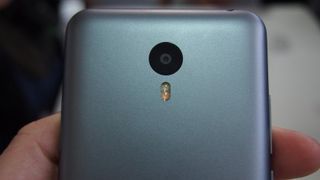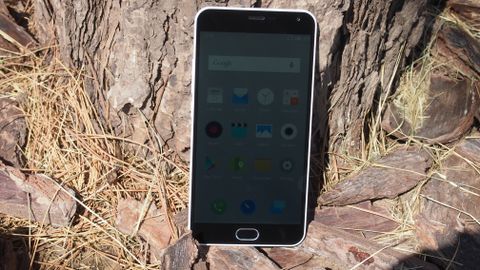Why you can trust TechRadar
The Meizu M2 Note comes with a 13 megapixel rear camera with autofocus and dual LED flash, and a five megapixel front-facing snapper. The photo quality of both cameras was good, with excellent colour accuracy during outdoor shoots, though details were sometimes lost.

Meizu claims to include zero-delay shooting technology and although I'd hesitate to say it was completely without delay, the M2 Note did take photos at an impressive speed.
If you find that with your current smartphone you've lined up to take the perfect shot, but in the time it takes for the phone to actually take the photo the moment has passed, you'll be very happy with the speed of the M2 Note.

It does result in some blurred shots, but on the whole I was pretty impressed with the quality. The camera app is straightforward to use, and comes with a host of settings and features that can be easily toggled on and off to configure your images.

These include a manual mode that offers an impressive amount of control over the camera. Instagram-like filters are also present, along with a Panarama mode and other pre-set options.

Another nice touch is that when using the camera app, the volume rocker can be used as the camera button.

The front-facing camera is also rather good and manages to capture colours well. You can apply the various filters to the front-facing camera as well, and there's a 'Beauty' setting that lets you give a virtual makeover to your selfies, with the effects you select (and sliders you use to determine the strength of the effect) appearing in real time over the image from the camera.
This feature is not much more than a mild diversion, though it shows how well the software and hardware of the M2 Note can identify parts of an image. For example, a slider lets you slim down your face, and the app does a good job of finding the edge of the face and bringing it inwards.

There's also an option to smooth the face, which aims to remove blemishes, but can give photos a bit of an eerie look. The other options remind you that this was originally a phone with a primarily Asian audience in mind. There's a slider for you to increase the size of the eyes, while a more troubling slider lets you increase the whiteness of your skin.
Equating whiteness of skin with beauty won't fly in most of the world, and Meizu could have been a bit more tactful about including this setting in the international version (if at all), but it feels like a case of lost in translation rather than malicious intent.
You can also shoot videos, and the footage captured was very impressive, with a good level of detail and smooth framerates for the 1080p shots.
Again, colour accuracy was represented well in the videos, and the M2 Note did an adequateI job of adjusting to changes in the light as I moved from inside to outside.

The two cameras included with the M2 Note are very capable snappers, and offer brilliant quality considering the price of the handset, with the images they produce putting other budget smartphones, such as the Moto G (2014), to shame.

Matt is TechRadar's Managing Editor for Core Tech, looking after computing and mobile technology. Having written for a number of publications such as PC Plus, PC Format, T3 and Linux Format, there's no aspect of technology that Matt isn't passionate about, especially computing and PC gaming. Ever since he got an Amiga A500+ for Christmas in 1991, he's loved using (and playing on) computers, and will talk endlessly about how The Secret of Monkey Island is the best game ever made.

